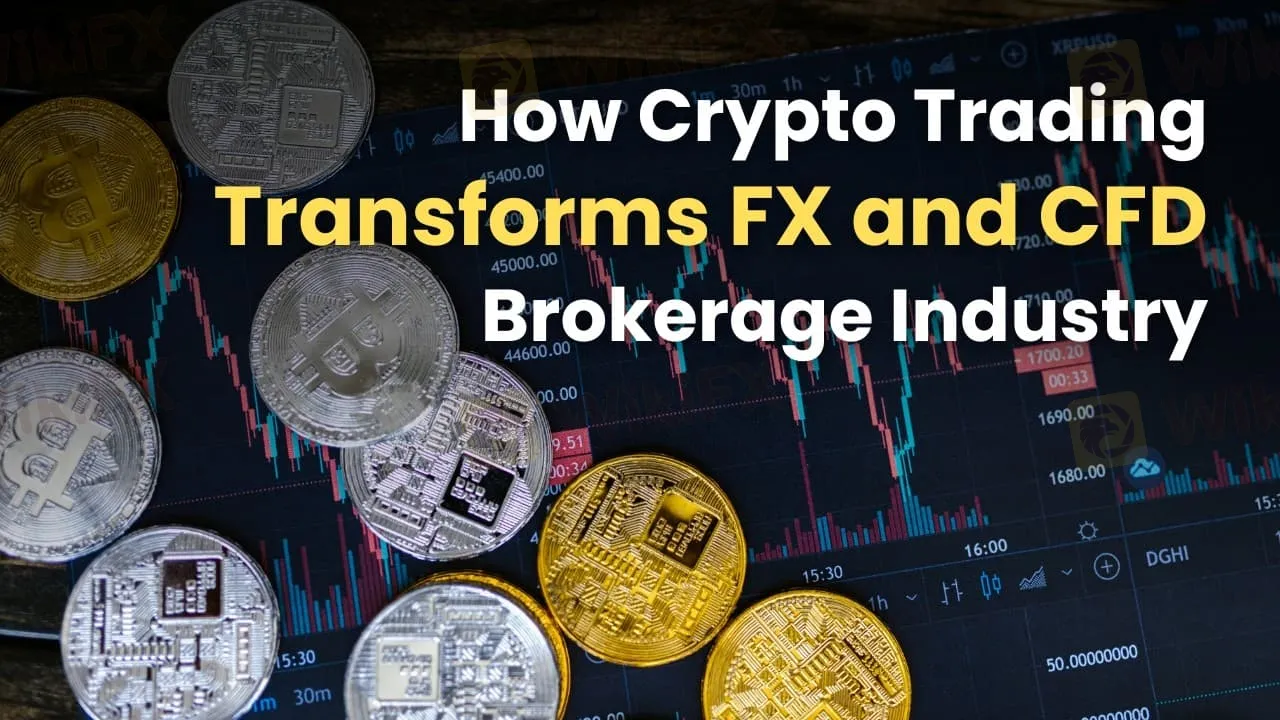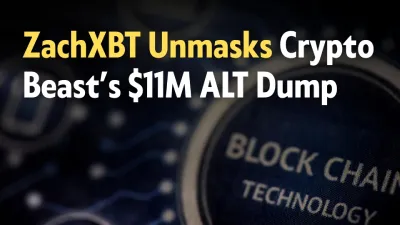简体中文
繁體中文
English
Pусский
日本語
ภาษาไทย
Tiếng Việt
Bahasa Indonesia
Español
हिन्दी
Filippiiniläinen
Français
Deutsch
Português
Türkçe
한국어
العربية
How Crypto Trading Transforms FX and CFD Brokerage Industry
Abstract:Explore how crypto trading reshapes FX and CFD brokerage with innovative products, liquidity solutions, and regulations in 2025.

Over the last ten years, the world of FX and CFD brokerage has transformed dramatically, with cryptocurrency trading stepping into the spotlight as a major force. What started as a small, experimental feature has grown into a central part of the business, weaving digital currencies into the fabric of traditional financial markets. Brokers today offer a wide variety of crypto trading choices alongside the usual options, though the path to this point has had its share of twists and turns. This piece explores how the industry, along with its tech partners, has adjusted to this shift, shining a light on new products, better liquidity, cutting-edge tech, tricky regulations, smarter risk controls, and stronger security measures tied to crypto trading.
Back in the early days, crypto trading popped up as a fresh way for brokers to let people bet on coins like Bitcoin, either through CFDs or direct spot trades. Since then, things have taken off. Now, brokers don't just stop at spot deals or leveraged bets—they've rolled out futures, options, perpetual swaps, and even staking setups. This change shows how crypto trading has moved beyond just guessing price jumps to plugging into bigger trends like decentralized finance (DeFi) and yield farming. These tools serve everyone from everyday traders to big institutional players, linking the casual crowd with the pros.
Liquidity, though, has always been a tough nut to crack in crypto trading. At first, brokers struggled with big gaps in pricing and shallow pools of orders, which made trades hard to pull off smoothly. But tech breakthroughs have flipped the script. By pulling together liquidity from places like centralized exchanges, decentralized networks, and market makers, brokers have beefed up their operations. Systems like smart order routing and liquidity pooling now make trades fast and steady, even when the market goes haywire. For big clients, the ability to move hefty orders without shaking things up too much stands out, all thanks to heavy-duty liquidity fixes.

Still, crypto trading's rise hasn't been a smooth ride when it comes to rules. Countries around the world keep churning out their own regulations, so brokers have to stay quick on their feet. In Europe, something called MiCA is starting to make things easier, letting firms handle both FX and crypto under one set of guidelines. On top of that, crypto's wild price swings keep risk management at the forefront. To tackle this, brokers have brought in flexible leverage tweaks, protection against negative balances, and sharp stop-loss options to guard traders against steep falls.
One big leap forward has been blending crypto trading into the platforms people already know. Separate accounts for digital coins are a thing of the past. Now, heavyweights like MetaTrader 4 (MT4) and MetaTrader 5 (MT5) let you trade crypto right alongside regular assets, making it simpler to keep everything in one place. Brokers are also opening up API access, which is a huge win for big traders and those running automated strategies, muddling the line between old-school finance and the new digital wave.
Interactive Brokers: Blending Crypto Into the Mix
Interactive Brokers (IB) has been steadily building out its crypto trading game, folding digital assets into its do-it-all platform. “Clients can trade cryptocurrency right next to their other investments, all with one cash management system,” says Steve Sanders, the company's EVP of Marketing and Product Development. Kicking off in the U.S., IB has spread its crypto reach to the UK and Hong Kong, teaming up with custodians like Paxos and Zero Hash. They keep it simple with four main pairs—Bitcoin, Ethereum, Litecoin, and Bitcoin Cash—all priced in USD. Sanders puts it plainly: “We don't do crypto CFDs or perpetual swaps, and there's no margin trading for crypto either.”
IB sticks to its guns on pricing, offering commissions as low as 0.12% in the U.S. with no extra fees tacked on. For the tech side, they lean on outside partners to handle custody and exchange duties while sprucing up their own tools. Their free PortfolioAnalyst, refreshed in 2023, lets users track crypto next to stocks and bonds. You can pull your crypto out to external wallets too, keeping things flexible. IB sets itself up as a one-stop shop for traders balancing crypto with stocks, bonds, and more.
What's Next for Crypto Trading
Bringing crypto trading into the FX and CFD brokerage world signals a gutsy new chapter. With broader product lineups, slicker liquidity solutions, and rules starting to line up, the industry's moving fast. Volatility is still a hurdle, but things like adjustable leverage and real-time risk controls are holding their own. Platforms like MT4 and MT5, plus API-powered setups, are stitching crypto into the heart of traditional trading. The road ahead looks set to keep pushing the boundaries of what brokerage can be.

Disclaimer:
The views in this article only represent the author's personal views, and do not constitute investment advice on this platform. This platform does not guarantee the accuracy, completeness and timeliness of the information in the article, and will not be liable for any loss caused by the use of or reliance on the information in the article.
Read more

ZachXBT Exposes Crypto Beast’s $11M $ALT Token Dump Scheme
ZachXBT uncovers Crypto Beast’s $11 million pump and dump scheme, causing $ALT token’s crash and wiping out retail investors. Read the full investigation.

Licence Denied: Tokenize Quits Singapore After MAS Decision
The Monetary Authority of Singapore (MAS) has denied Tokenize Xchange’s application for a Major Payment Institution (MPI) licence, prompting the cryptocurrency platform to cease its operations in Singapore and shift focus to Labuan, Malaysia.

Harsh Truths About ATC Brokers Every Trader Must Know
Many regulated brokers hide the risks associated with them. They never talk about these risks and try to attract customers with appealing offers. Later on, customers discover these hidden risks and feel disappointed. Before you come across a similar situation, we want to let you know the risks involved with ATC Broker. Check out the article to discover the harsh truth about it.

BaFin Issues Warnings Against Unauthorised Crypto and Investment Platforms
BaFin has recently flagged multiple websites, including stcwelt.com and mega-platz.pro, for offering financial and cryptoasset services without proper authorisation. Stay informed and protect your investments.
WikiFX Broker
Latest News
Asia-Pacific stocks fall as investors weigh recent trade developments
Is Your Forex Strategy Failing? Here’s When to Change
FSMA Warns That Some Firms Operate as Pyramid Schemes
Apex Trader Funding is an Unregulated Firm | You Must Know the Risks
LVMH shares jump 2.5% after reporting better-than-feared earnings, Texas factory plans
Why Octa Is the Ideal Broker for MetaTrader 4 & 5 Users
Stop Level Forex: How Does it Help Traders Prevail When Losses Mount?
5 things to know before the Thursday open: Meme stock revival, Trump's Fed visit, Uber's gender feature
CNBC's Inside India newsletter: Leaving, but not letting go — India's wealthy move abroad, but stay invested
Moncler raises prices on tariffs, may postpone store openings if downturn worsens
Currency Calculator


